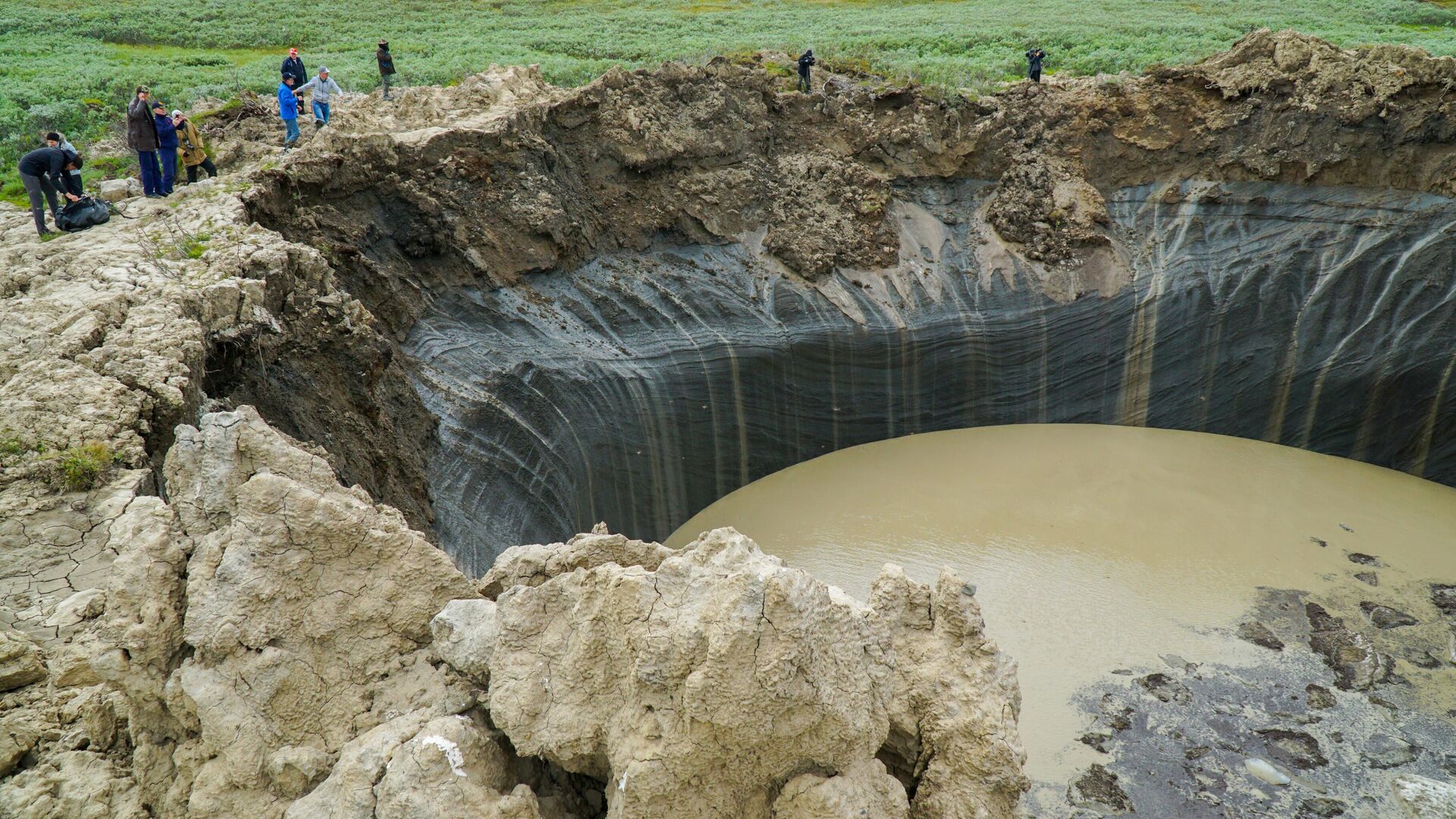
MOSCOW, January 26. Scientists from the University of Oslo have put forward another hypothesis for the formation of giant sinkholes in the north of Western Siberia. Previously, Russian geologists proposed several of their models. About how the Yamal craters could have arisen, see the material .
Arctic craters
In 2014, on the Yamal Peninsula, not far from the Bovanenkovo gas field, a funnel with vertical walls with a diameter of 40 meters and a depth of about 50 was discovered. Soon, several more similar structures were found nearby, on the territories of the Yamal and Gydan Peninsulas.
Over the years, scientists have proposed several hypotheses for the formation of the Yamal craters, all in one way or another related to explosive methane emissions.
The permafrost zone, which occupies two-thirds of Russia's territory, is a gigantic natural reservoir of this gas. Under conditions of warming and the gradual destruction of permafrost, methane located at depth is released and rushes to the surface.
«Volcanic» model
Deputy Director for Science of the Institute of Oil and Gas Problems (IPPG) of the Russian Academy of Sciences, Corresponding Member of the Russian Academy of Sciences Vasily Bogoyavlensky, who has been studying the Yamal craters since their discovery, connects the appearance of these structures with processes similar to those that occur during mud or cryovolcanic eruptions.
Natural gas flows from the depths through fault zones to the surface. Due to this, abnormally high formation pressures arise at the base of the permafrost strata, and partial melting of the ice occurs with the formation of a thermokarst cavity. As it fills with gas, it begins to put pressure on the overlying layers of frozen rock. They become deformed, and characteristic swelling mounds appear on the surface.
If the process of deep gas entry and pressure growth continues, the roof of the ice cavity cracks, and then at some point collapses with pneumatic exhaust. In this case, due to the resulting electrostatic discharges, spontaneous ignition and gas explosion are possible.
“In these cases, gigantic craters with a depth of over 50 meters are formed, and pieces of frozen rock and ice soil ejected by the explosion scatter over many hundreds of meters,” explains Bogoyavlensky. “We found more than ten such objects in the Russian Arctic. In addition, about seven thousand perennial heaving mounds, some of which pose a potential danger, and more than 400 lakes, whose bottoms are dotted with large craters of gas emissions.»
In the north of the Yamalo-Nenets Autonomous Okrug and the Krasnoyarsk Territory, employees of the Institute of Oil and Gas RAS discovereddozens of objects that may also turn out to be gas emission craters. The majority are in the South Kara region, unique in terms of hydrocarbon reserves, often near or directly on the territory of oil and gas fields.
Many objects that researchers have been observing for years are characterized by episodic explosive events, which confirms the volcanic nature of crater formation.
«Lake» model
In the summer of 2017, biologists studying bird nesting sites in Yamal discovered another gas emission crater in the floodplain of the Erkutayakha River, which differed from the previous ones in that it formed on the site of a dry lake. Skoltech scientists, led by leading researcher at the Center for Science and Technology of Hydrocarbon Production Evgeny Chuvilin, together with colleagues from the Department of Science and Innovation and the Scientific Center for Arctic Studies of the Yamalo-Nenets Autonomous Okrug, spent two years exploring the Erkutinsky crater and proposed the following model of his education.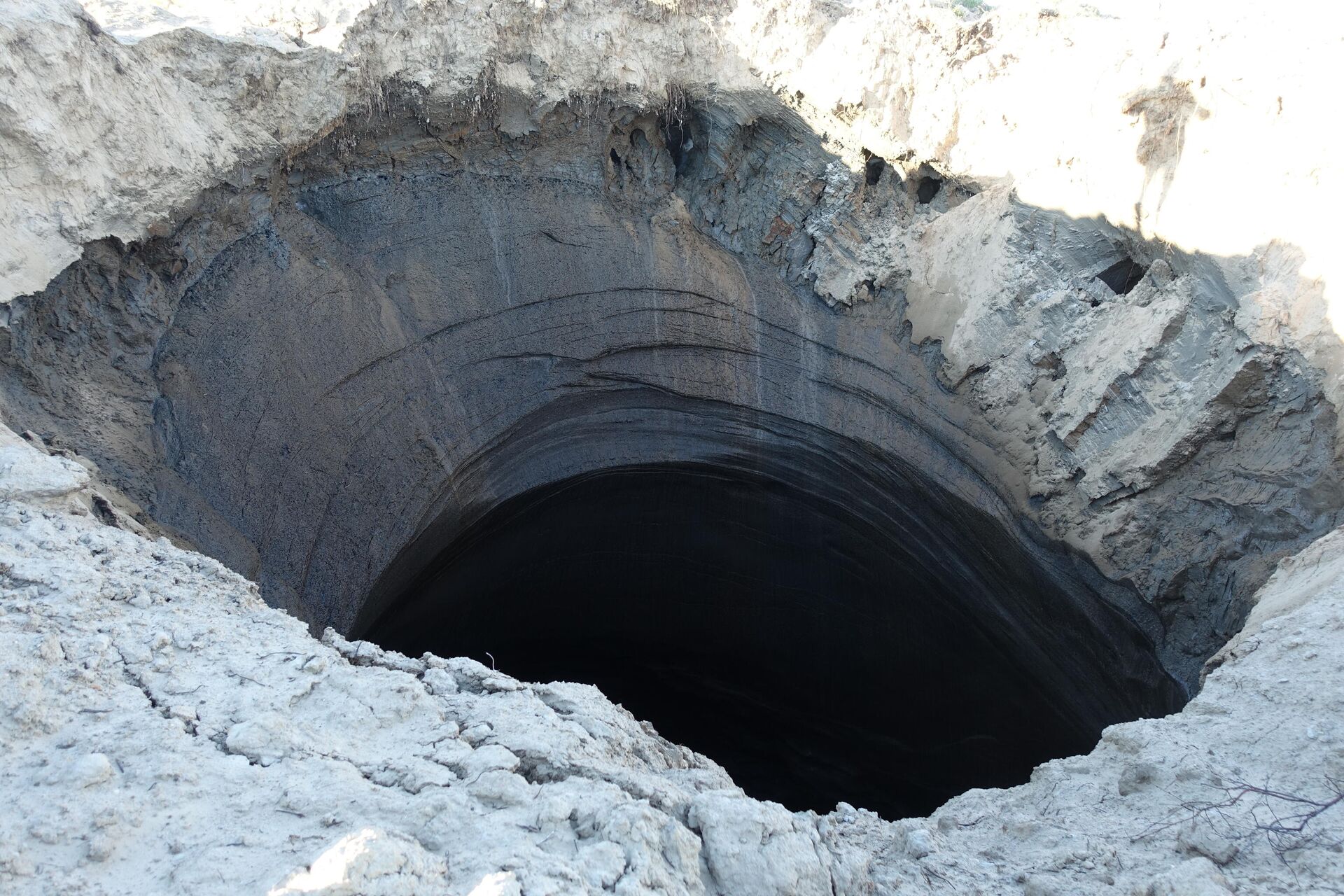
During the existence of the lake, there was a talik underneath it — an area of unfrozen rock surrounded by permafrost. Through the talik and the bottom of the lake, methane leaked to the surface from the depths, as well as from gas hydrate deposits, which are rich in the subsoil of the region. It is known that when melting, methane hydrates decompose into water and gas.
After the lake dried out, the talik began to gradually freeze. Gas, no longer having an outlet, accumulated in its upper part. When the stress in the talik dome exceeded the lithostatic pressure of the overlying rocks, an explosion occurred, and with it the collapse of the roof.
< br />
Cryopeg model
However, most of the craters have no visible connection with the lakes; their walls are not composed of frozen talik rocks, but of massive ground ice, large blocks of which are usually scattered hundreds of meters around the crater. To explain their formations, scientists from Skoltech proposed another model.
Geologists working in the region for oil and gas often discover cryopegs under a layer of ground ice — underground reservoirs of highly mineralized (cryohaline) ) waters with a negative freezing point.
Chuvilin and co-authors believe that gas coming from the depths and from methane hydrate deposits, which cannot penetrate the permafrost layer, accumulates in the dome part of cryopegs, in open cavities that arise due to the difference in the specific volumes of ice and water during permafrost melting. Just like in previous models, when the maximum pressure is reached, gas breakthrough occurs with the formation of a crater.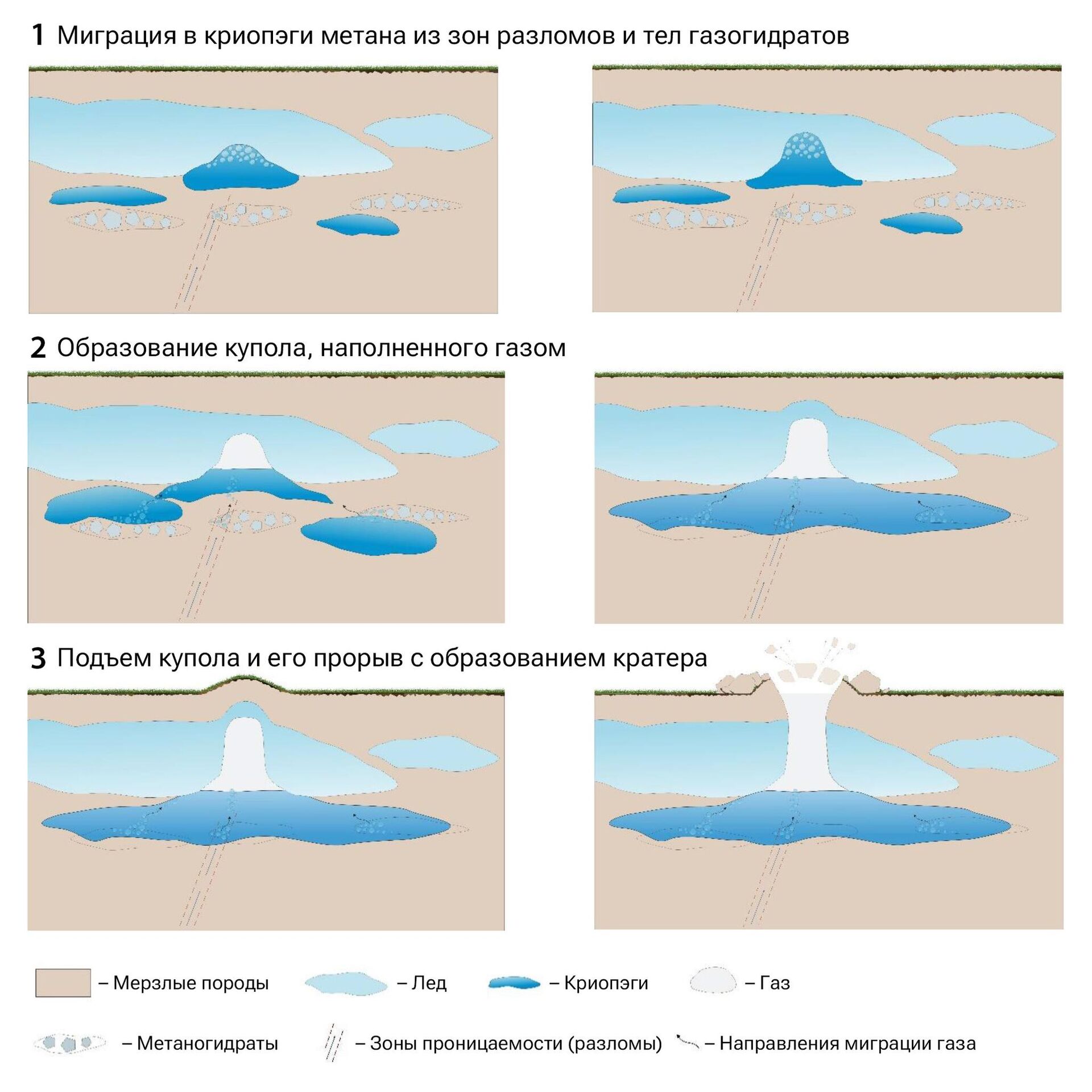
Norwegian model
Norwegian geologists conducted a comparative analysis of existing hypotheses for the formation of Yamal craters and published the results in the form < u>articles on the EarthArXiv preprint server.
The authors note that all previously proposed models have their pros and cons. For example, the cryopeg model does a good job of explaining the presence of caverns on the ice walls of craters, indicating that open ice melting took place before the explosion. At the same time, the areal heating of permafrost, which all researchers talk about, should lead to the expansion of cryopegs, a decrease in the density of their brines due to dilution with melt water, and a decrease, rather than an increase, in the pressure of the gas phase. In addition, the authors' calculations showed that the pressure should be the same throughout the cryopeg, which excludes the formation of a vertical protrusion in its roofing part.
When developing an alternative model, Norwegian scientists proceeded from the fact that the solution to the phenomenon of the Yamal craters should be sought in their exceptional confined to a small area in the north of Western Siberia, bounded by the Yamal and Gydan peninsulas. Outside of it — in the rest of the Arctic zone, where the whole set of factors is also present (permafrost, gas hydrate deposits, cryopegs) — there are no such formations.
Researchers consider a special condition to be the presence under the Yamal Peninsula of a dome-shaped structure with accumulations of natural gas located close to the surface and significant in volume, which create excess pressure. According to earlier studies, throughout the Holocene (after the end of the last ice age approximately 11 thousand years ago), this structure was characterized by increased heat flow — temperatures in Yamal and Gydan were two to four degrees Celsius higher than the average values for these latitudes.< br />According to the authors, this led to the fact that the permafrost layer became thinner, open zones of permeability and taliks appeared in it, through which gas escaped.
During the so-called Little Ice Age, which reached its peak about 200 years ago, the taliks froze and gas began to accumulate in their roof. After the end of the cold period, warming began again. Simultaneous heating from the surface and thawing of the ice layer from below led to the fact that gas cavities began to rise to the surface.
The authors emphasize that the thickness of the permafrost layer in the region is very uneven: it ranges from several tens to 500 meters. The breakthrough occurred in the thinnest and heated places, mainly above fault zones, which, in turn, served as channels for the entry of deep gases.
After a breakthrough, the crater, as a rule, quickly fills with water and is covered with sediment. But after some time, its reactivation may begin, associated with the continued supply of gas along a deep fault or from surrounding bodies of methane hydrates decomposing under pressure release conditions. A new breakthrough will occur when the volumes of gas entering from the depths exceed the rate of its release to the surface, for example, from the bottom of a lake formed in a crater funnel.
Norwegian geologists emphasize that their model differs from previous ones primarily in that the central role in It is attributed to increased local heating in the area of crater accumulation, which led to a decrease in the thickness of permafrost. Moreover, this warming up occurred long before the onset of so-called global warming.








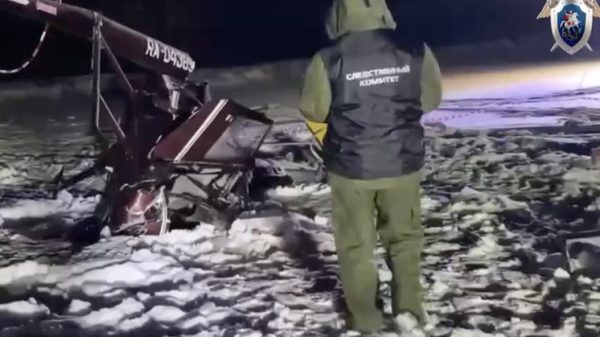
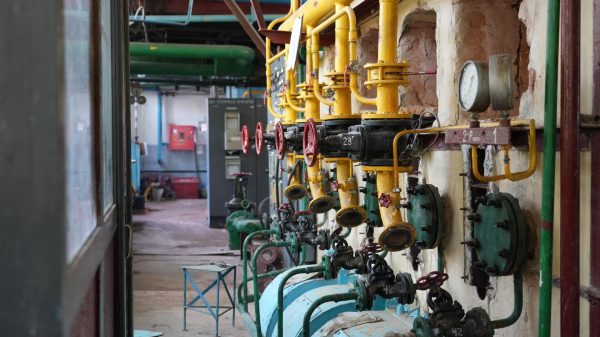








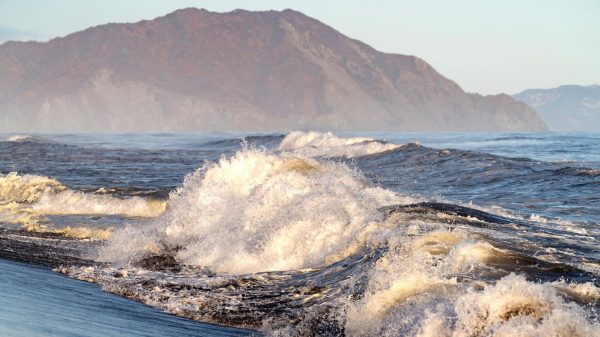


























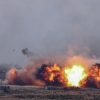









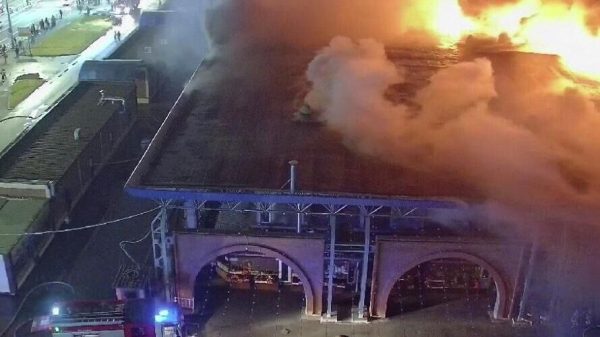

Свежие комментарии